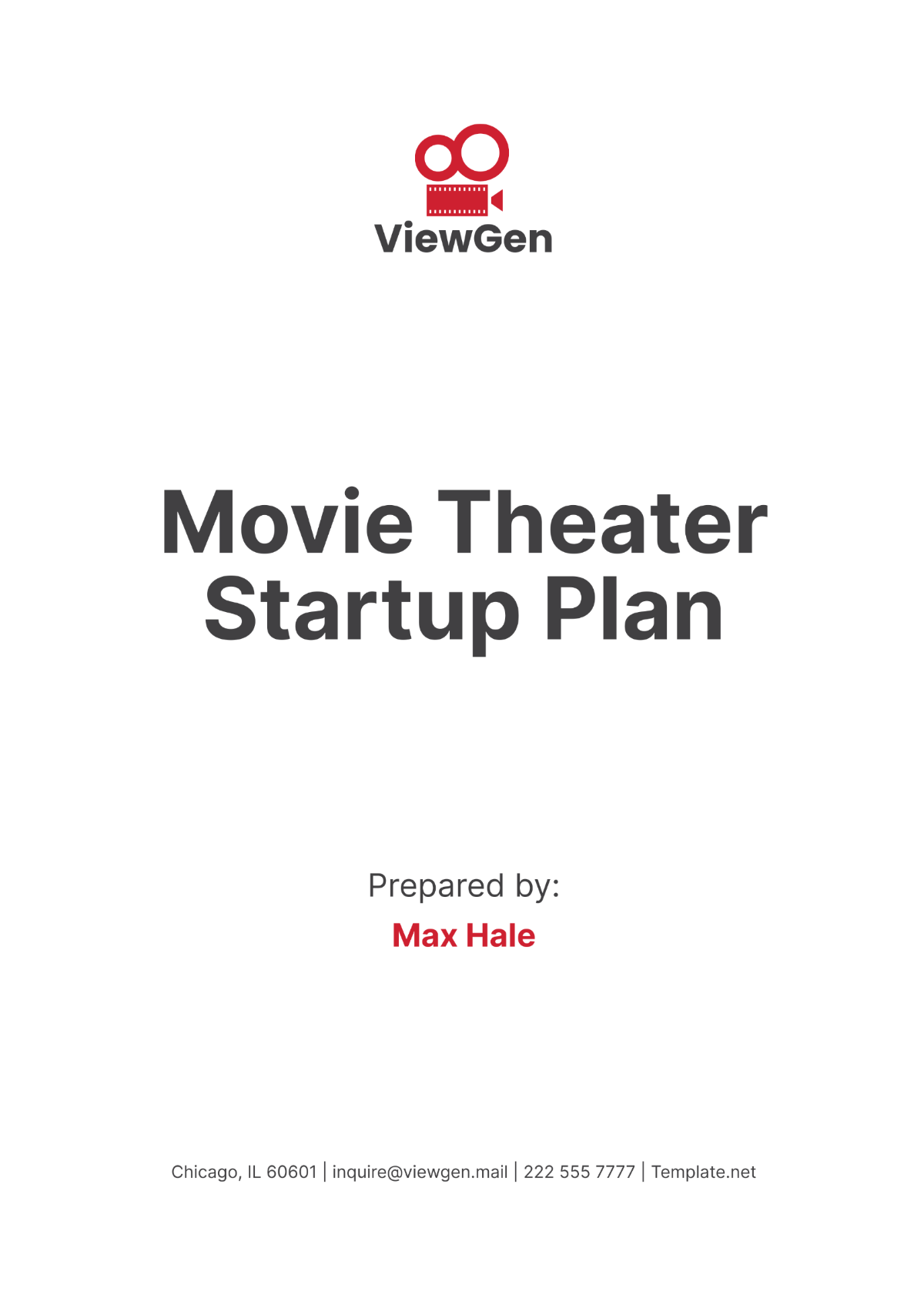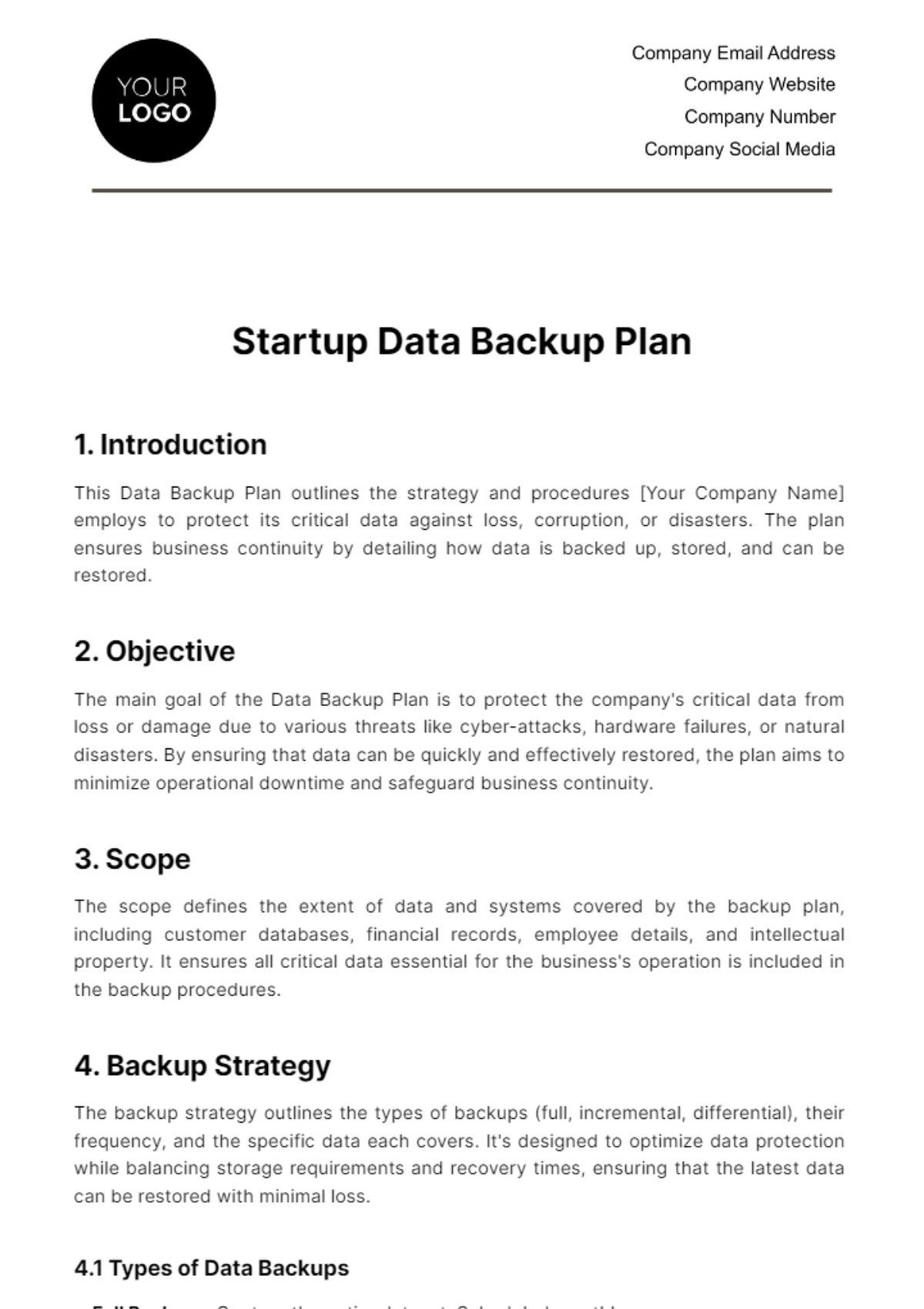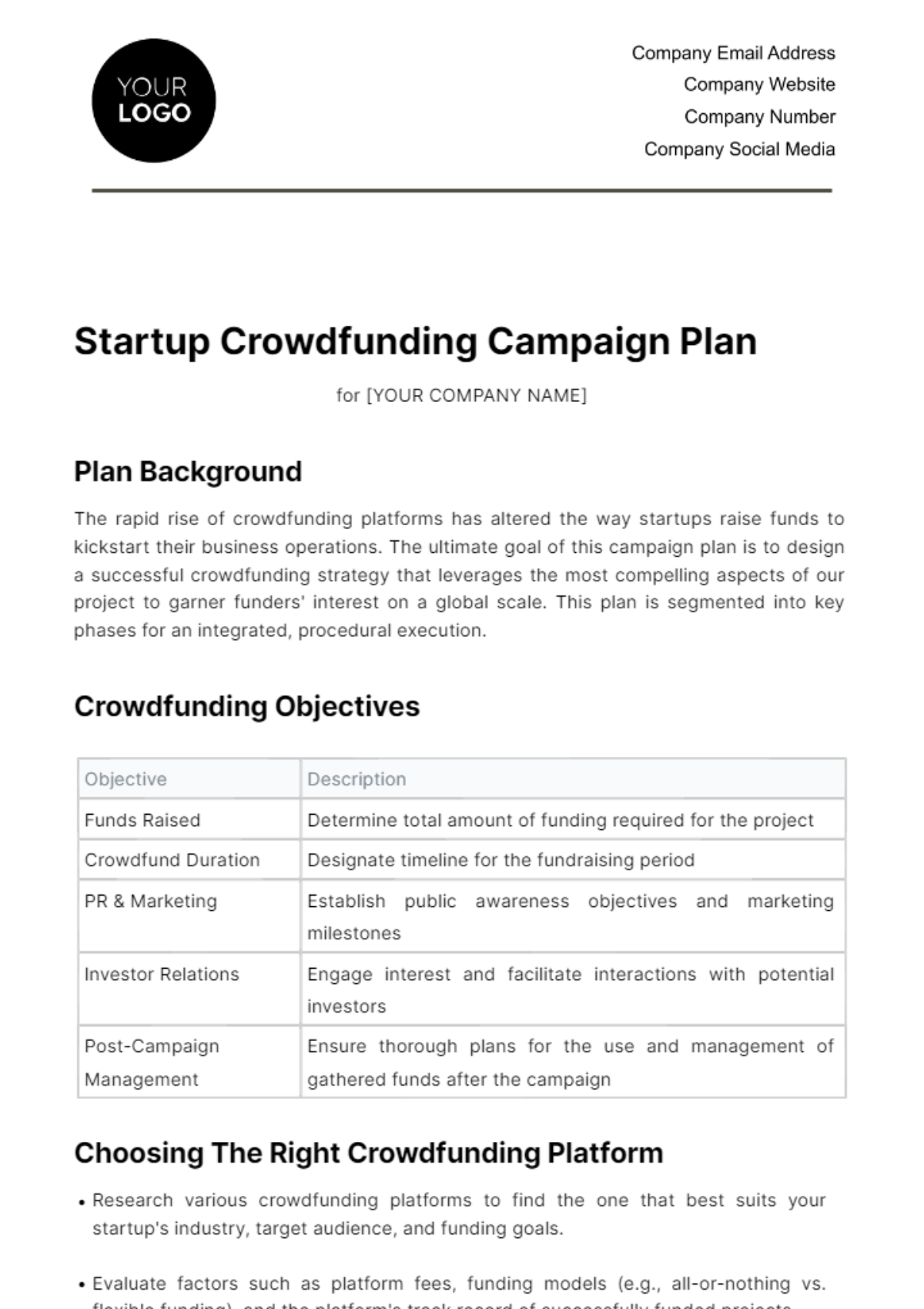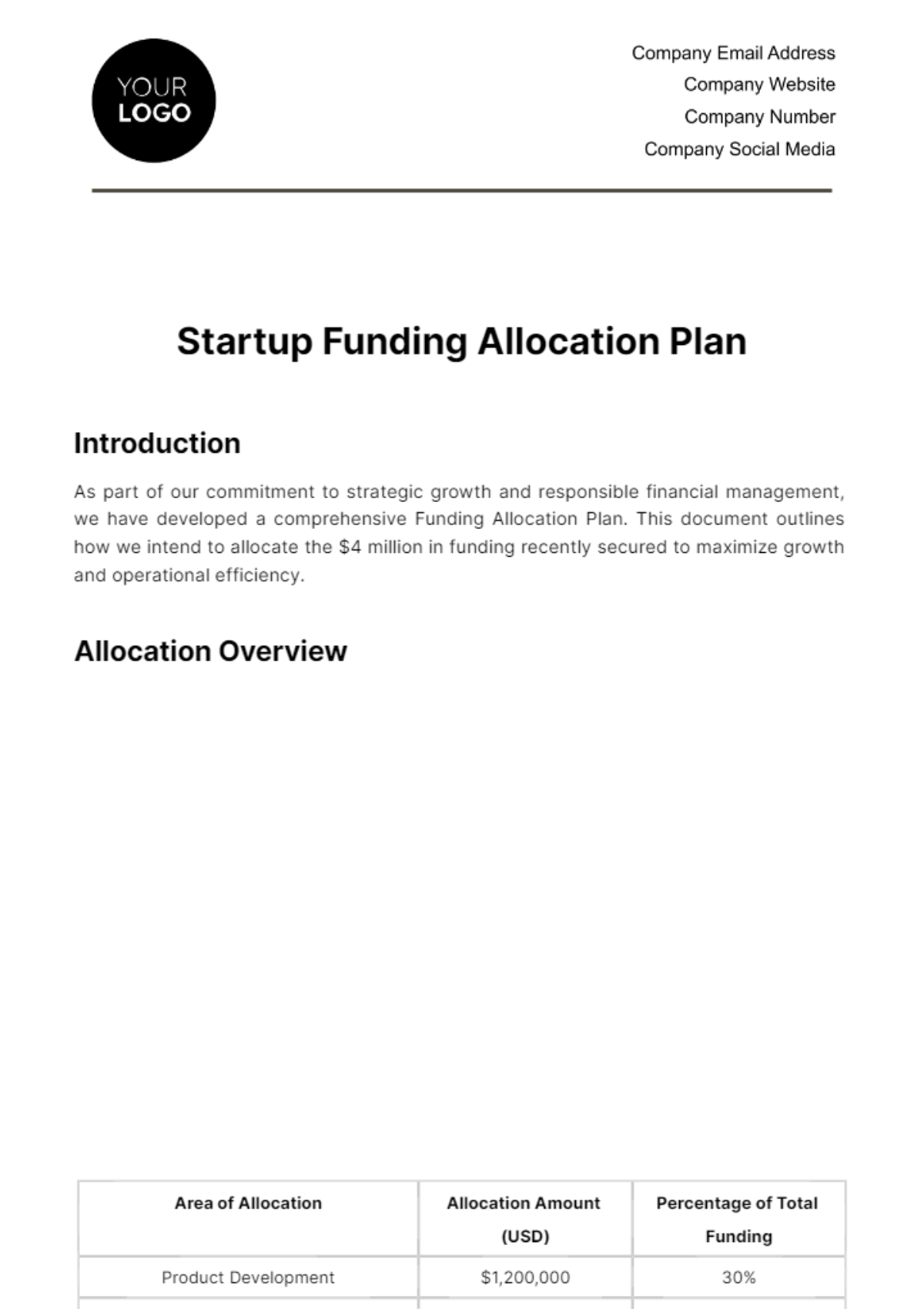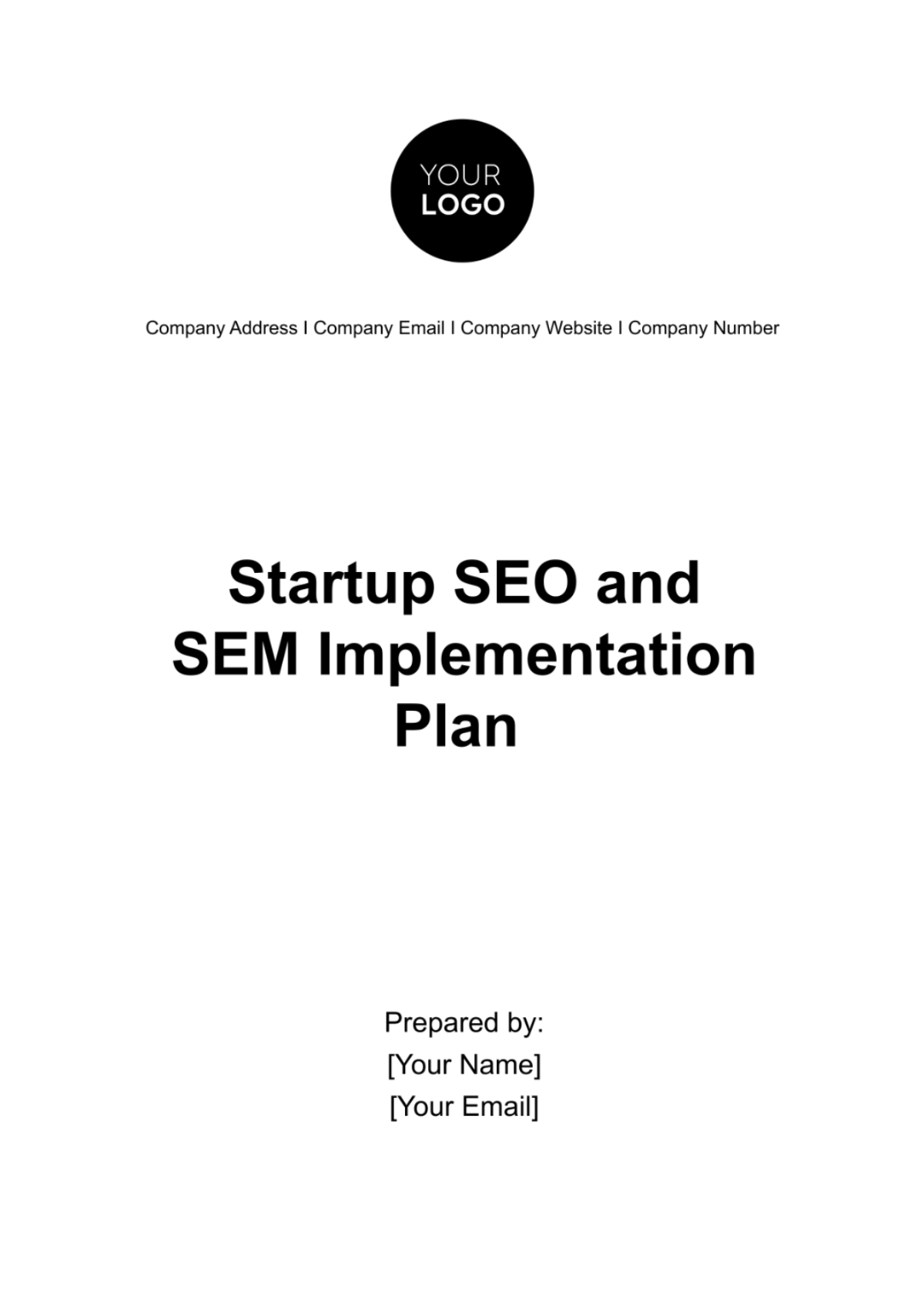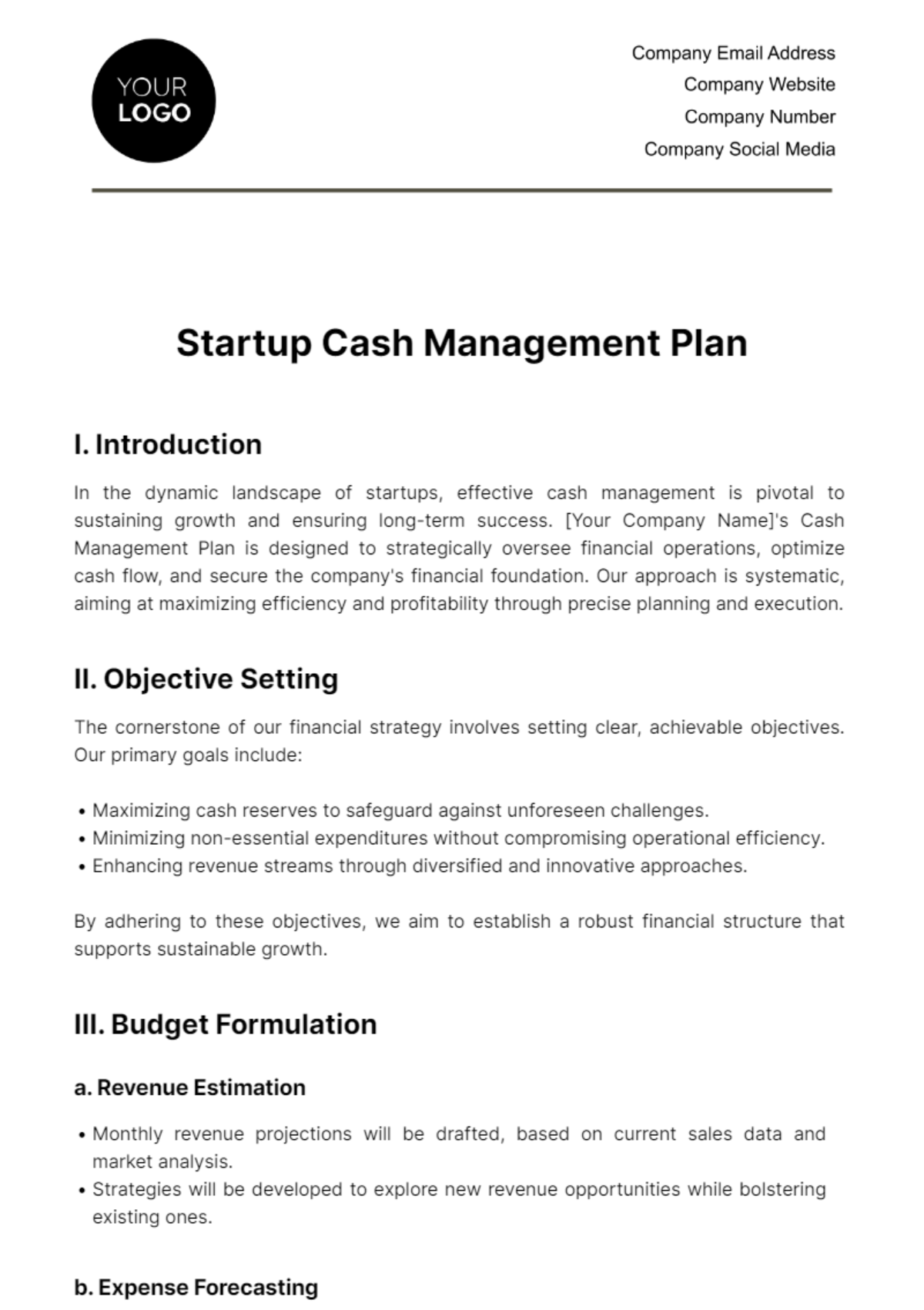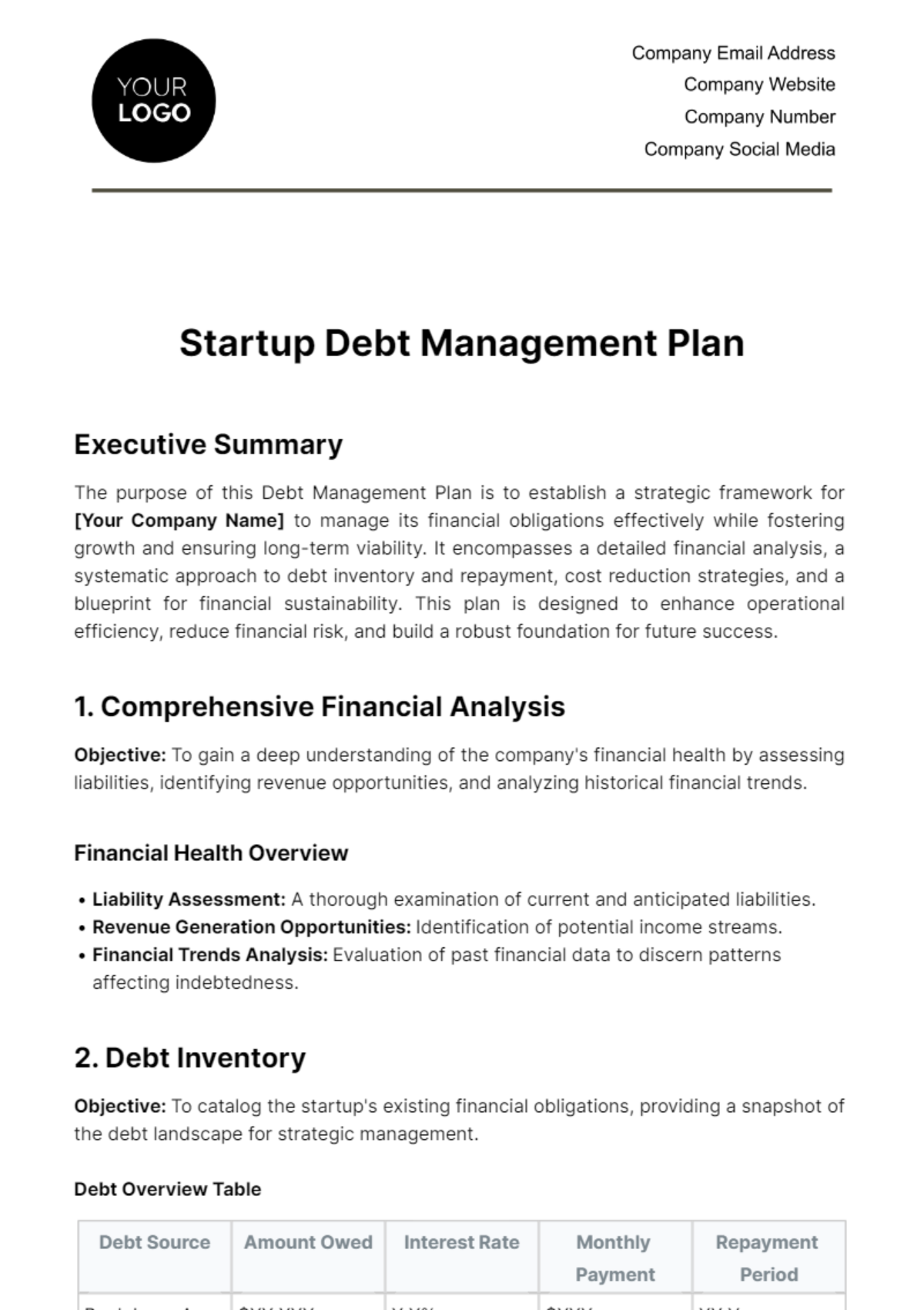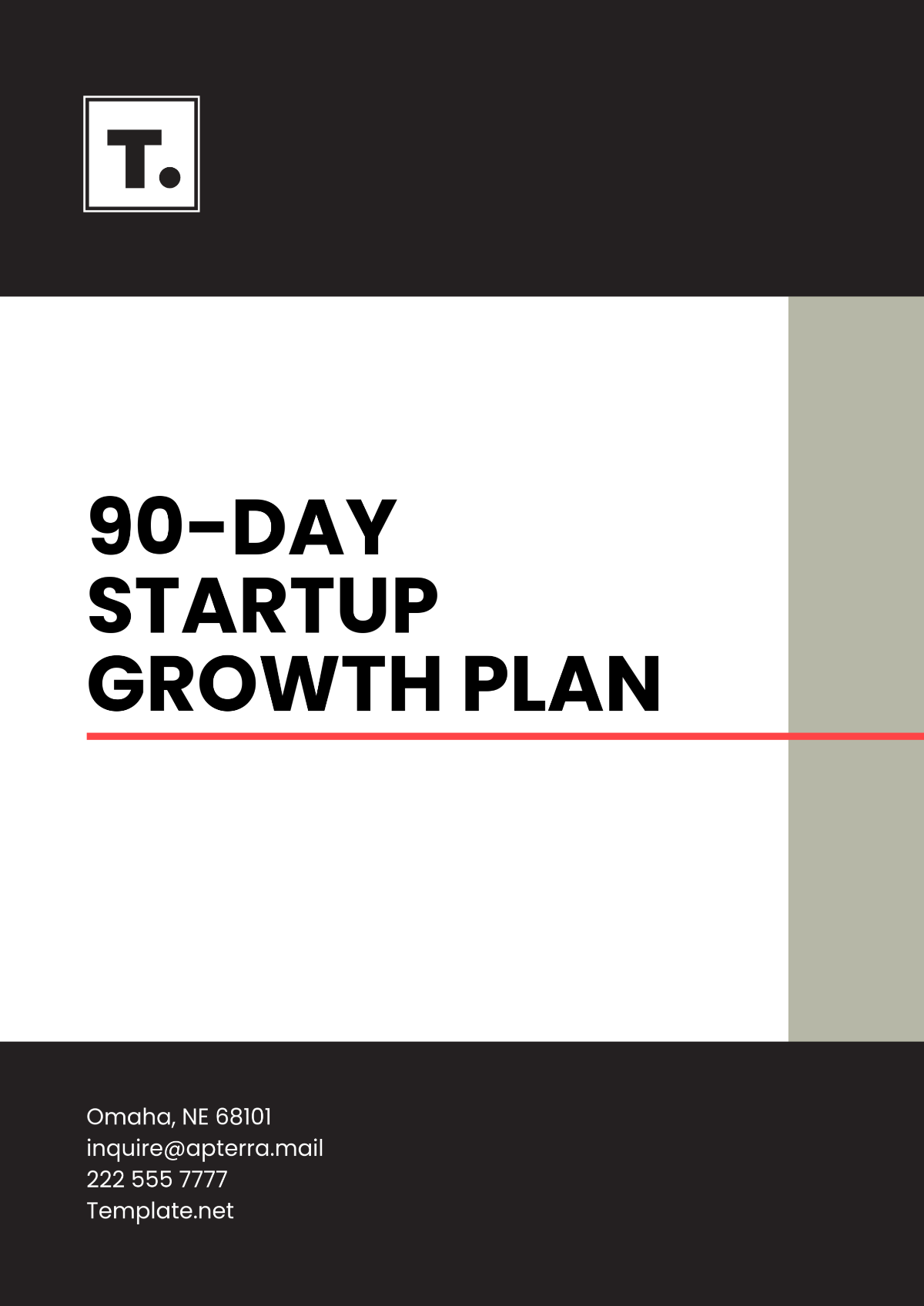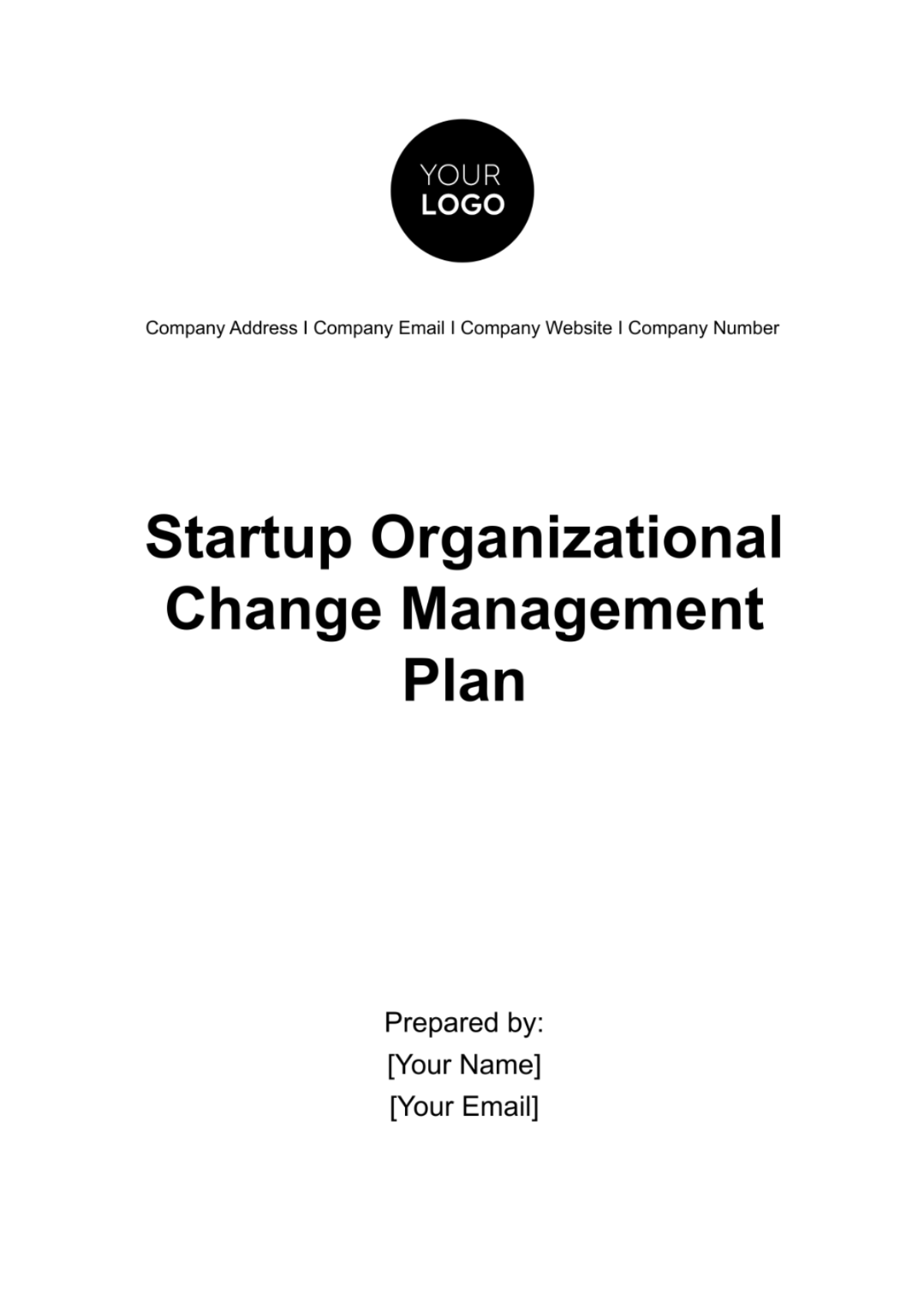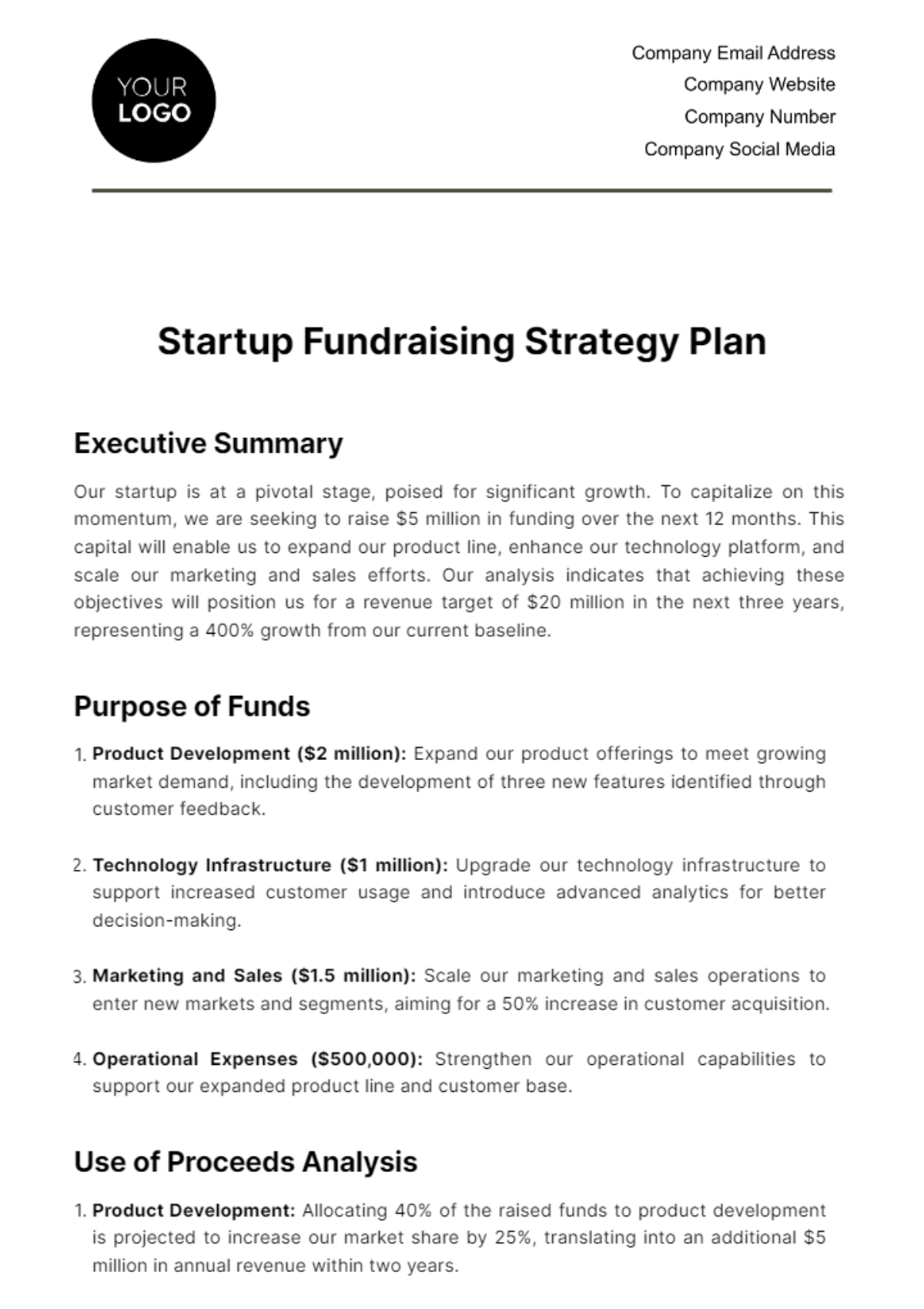Startup SEO and SEM Implementation Plan
In the digital age, the visibility of your startup online can significantly influence its success. Search Engine Optimization (SEO) and Search Engine Marketing (SEM) are two pillars of digital marketing that can elevate [Your Company Name] above its competitors. This document outlines a strategic plan to implement SEO and SEM effectively, aiming to improve your website's visibility, drive targeted traffic, and ultimately increase conversions.
SEO involves optimizing your website to rank higher in organic search results, making it easier for your target audience to find you. SEM involves using paid advertising to enhance visibility in search engine results pages (SERPs). Together, these strategies create a comprehensive approach to digital marketing that can lead to sustainable growth for [Your Company Name].
Objectives of the Plan:
Improve Website Visibility: Increase [Your Company Name]'s presence in search results for relevant queries.
Drive Targeted Traffic: Attract visitors who are actively searching for products or services offered by [Your Company Name].
Increase Conversions: Convert more of the website's visitors into customers or leads.
By following this plan, [Your Company Name] will establish a robust online presence, reaching more potential customers and creating more opportunities for growth.
Part 1: SEO Implementation
Chapter 1: SEO Basics
SEO is the art and science of optimizing your website to rank higher in search engine results pages (SERPs), thereby increasing organic traffic. This chapter introduces the core components of SEO, how search engines work, and the distinction between the different types of SEO: On-Page, Off-Page, and Technical SEO.
Understanding SEO and How Search Engines Work
Search engines aim to provide users with the most relevant and useful results. To do this, they crawl, index, and evaluate web pages based on hundreds of factors. The goal of SEO is to optimize your site so that search engines find it valuable and relevant to specific search queries.
Process | Description |
|---|---|
Crawling | Search engines use bots to discover new and updated pages. This process involves following links from known pages to new ones. |
Indexing | Once a page is crawled, it's added to the search engine's index, a massive database of all the content they've discovered. |
Ranking | When a user performs a search, search engines rank the indexed pages based on factors like relevance, authority, and user experience. |
The Difference Between On-Page, Off-Page, and Technical SEO
On-Page SEO: Refers to optimizations you can apply directly to your website's pages to improve their ranking. This includes content quality and relevance, keyword optimization, header tags, and meta tags.
Off-Page SEO: Involves activities outside your own website to boost your site's credibility and ranking. The most significant factor here is backlinks from other reputable sites to yours.
Technical SEO: Focuses on improving the technical aspects of your website to aid search engines in crawling and indexing your site more effectively. This includes site speed, mobile-friendliness, and structured data.
Key Takeaways for [Your Company Name]:
Start with a Website Audit: Before diving into SEO, understand your current standing. Use tools like Google Analytics, Google Search Console, and SEO audit tools to identify areas of improvement.
Keyword Research: Identify the terms and phrases your target audience is searching for. This will guide your content creation and on-page SEO strategies.
Content Creation: Develop high-quality, engaging content that addresses your audience's needs and questions. Use your target keywords naturally within your content.
On-Page Optimization: Ensure each page is optimized for both search engines and users. This includes optimizing title tags, meta descriptions, and content for your target keywords.
Build Authority with Off-Page SEO: Develop a strategy to acquire backlinks from reputable sites in your industry. This could involve guest blogging, partnerships, and digital PR.
Technical Improvements: Regularly check your site for technical issues that could impact your SEO performance, such as slow loading times, broken links, and mobile usability issues.
By mastering these SEO basics, [Your Company Name] can set a solid foundation for its online presence, ensuring your website is visible and attractive to both search engines and your target audience. Remember, SEO is a marathon, not a sprint. Consistency and adherence to best practices over time will yield the best results.
Chapter 2: Keyword Research
Keyword research is the foundation of any successful SEO strategy. It involves identifying the terms and phrases your target audience uses when searching for products or services like those [Your Company Name] offers. This section will guide you through the process of conducting keyword research, selecting the right keywords, and applying them to optimize your website.
Tools for Keyword Research
Several tools can assist in keyword research, each offering unique insights:
Google Keyword Planner: Ideal for finding search volume and competition levels for keywords.
SEMrush: Offers comprehensive data on keyword rankings, variations, and competitor analysis.
Ahrefs: Provides detailed keyword reports and SERP analysis.
Identifying Target Keywords for [Your Company Name]
Start with Seed Keywords: Begin by listing out basic terms related to your business. For [Your Company Name], this might include "tech solutions," "software services," and "IT support."
Expand Your List: Use the tools mentioned above to find related terms, questions, and long-tail keywords. For example, "affordable tech solutions for small businesses" or "custom software services."
Understand Keyword Intent: Categorize the keywords by intent (informational, navigational, transactional) to tailor your content accordingly. For instance, "how to improve business efficiency with technology" (informational) vs. "buy custom software services" (transactional).
Table 1: Sample Keyword Research for [Your Company Name]
Keyword | Search Volume | Competition | Intent |
|---|---|---|---|
tech solutions | 1,000 | High | Navigational |
Chapter 3: On-Page SEO Strategies
Optimizing Title Tags and Meta Descriptions
Title Tags: These are critical for both SEO and user experience. Each page's title tag should be unique, incorporate primary keywords, and clearly describe the page's content. For [Your Company Name], if you have a page about "Custom Software Development," a title tag could be "Custom Software Development Services | [Your Company Name]."
Meta Descriptions: Though not a direct ranking factor, meta descriptions significantly impact click-through rates. A compelling description should summarize the page content and include a call-to-action, encouraging users to click. For example, "Discover custom software development solutions tailored to grow your business. Contact [Your Company Name] today to get started."
Content Optimization
Quality Content: Ensure your content is high-quality, informative, and answers the questions your target audience is asking. Use tools like Answer the Public to find common questions. For instance, a blog post titled "How Custom Software Can Elevate Your Small Business" could address a frequent query.
Keyword Usage: Incorporate target keywords naturally in your content, including headings and subheadings. Avoid keyword stuffing; instead, focus on creating a natural flow.
Internal Linking: Use internal links to guide users to related content on your site, enhancing user experience and allowing search engines to crawl your site more effectively.
Chapter 4: Off-Page SEO Strategies
Building High-Quality Backlinks
Strategies | Description |
|---|---|
Guest Blogging | Write articles for reputable sites in your industry. This not only provides backlinks but also positions [Your Company Name] as a thought leader. |
Content Syndication | Share your content on platforms like Medium or LinkedIn, which can generate backlinks and expose your content to a wider audience. |
Influencer Outreach | Engage with influencers or industry leaders by sharing your content with them or inviting them to contribute to your blog. |
Chapter 5: Technical SEO
Improving Site Speed
Optimize Images: Use tools like TinyPNG to reduce image file sizes without losing quality.
Enable Compression: Use software for file compression, such as Gzip, to reduce the size of your CSS, HTML, and JavaScript files.
Leverage Browser Caching: Set your web server to enable browser caching, which helps load pages faster for repeat visitors.
Mobile Friendliness
Ensure your website is responsive and provides a good user experience on mobile devices. Google's Mobile-Friendly Test can offer insights into how well your site performs on mobile.
Secure Sockets Layer (SSL)
Moving your website to HTTPS is critical for security and trust, and it's a ranking signal for Google. Ensure your site has a valid SSL certificate.
Chapter 6: Local SEO (For Location-Based Startups)
Google My Business Optimization
Claim and verify your Google My Business listing. Fill out every section accurately, including your business name, address, phone number, and business hours. Regularly update your profile with new photos and posts to stay engaged with your audience.
Local Citations and NAP Consistency
Ensure your business's Name, Address, and Phone Number (NAP) are consistent across all online platforms and directories. Inconsistencies can confuse both users and search engines, potentially harming your local SEO efforts.
Collecting and Managing Online Reviews
Encourage satisfied customers to leave positive reviews on your Google My Business profile and other relevant platforms. Respond professionally to both positive and negative reviews to show you value customer feedback.
Chapter 7: SEO Analytics and Monitoring
Setting Up Google Analytics and Search Console
Google Analytics provides insights into your website's traffic, while Google Search Console helps you understand your site's search performance. Together, these tools can guide your SEO strategy.
Monitoring Keyword Rankings
Regularly track how your keywords are performing in search results. Tools like SEMrush and Ahrefs can provide detailed reports on your rankings.
Analyzing Traffic and User Behavior
Use analytics to monitor where your traffic is coming from, which pages are most popular, and how users are interacting with your site. Look for patterns that indicate successful content or areas that need improvement.
By implementing these strategies, [Your Company Name] can improve its website's SEO performance, driving more organic traffic and enhancing its online visibility. Remember, SEO is an ongoing process that requires regular monitoring and adjustments to adapt to changes in search algorithms and market trends.
Part 2: SEM Implementation
Chapter 1: Understanding SEM
The Role of Paid Search in Digital Marketing
Search Engine Marketing (SEM) involves purchasing ads on search engines to increase visibility and traffic to your website instantly. Unlike SEO, which focuses on earning traffic through unpaid efforts, SEM buys visibility on search engines. It's a powerful tool for [Your Company Name] to drive targeted traffic and conversions quickly.
Overview of PPC (Pay-Per-Click) Advertising
PPC is the most common SEM strategy, where you pay a fee each time someone clicks on your ad. The cost per click (CPC) can vary based on the competitiveness of the keyword and the quality of the ad. PPC allows for precise targeting, from keyword selection to demographic and geographic targeting.
Chapter 2: Setting Up Google Ads
Creating Your Google Ads Account
Steps | Description |
|---|---|
STEP 1: | Visit the Google Ads website and sign up with your Google account. Follow the setup wizard, which will guide you through selecting your campaign goal, defining your audience, and setting your budget. |
STEP 2: | Familiarize yourself with the Google Ads dashboard. Spend time understanding the different sections, such as Campaigns, Ad Groups, Keywords, and Ads. |
Structuring Your Ad Campaigns
Campaign Level: Decide on your campaign type (e.g., Search, Display, Shopping). For [Your Company Name], starting with a Search campaign might be most effective.
Ad Group Level: Within each campaign, create ad groups that focus on a specific theme or product. For instance, if [Your Company Name] offers both software development and IT consulting, each service could have its ad group.
Selecting the Right Campaign Types for Your Goals
Search Campaigns: Ideal for capturing users actively searching for your products or services.
Display Campaigns: Useful for building brand awareness by showing ads on websites your target audience visits.
Chapter 3: Keyword Strategy for SEM
Researching and Selecting Keywords for PPC
Use keyword research tools to identify terms your potential customers use when searching for your products or services. Include both broad and specific keywords to capture a wide range of intents.
Understanding Match Types
Broad Match: Shows your ad on searches related to your keyword, offering the widest reach but less targeting precision.
Phrase Match: Your ad appears for searches that include your exact keyword phrase, providing a balance between reach and relevance.
Exact Match: Displays your ad for searches that match your keyword precisely, offering the highest targeting accuracy.
Negative Keyword Lists
Utilize negative keywords to prevent your ads from appearing on irrelevant searches, optimizing your budget and improving campaign performance.
Chapter 4: Creating Effective Ads
Writing Compelling Ad Copy
Focus on clear, benefit-driven copy that addresses your target audience's needs and pain points. Include a strong call-to-action (CTA) to encourage clicks.
Utilizing Ad Extensions
Enhance your ads with extensions like sitelinks, callouts, and structured snippets to provide additional information and improve your ad's visibility and click-through rate (CTR).
A/B Testing Ad Variations
Regularly test different versions of your ads to see which performs best. Adjust elements like headlines, descriptions, and CTAs to optimize performance.
Chapter 5: Landing Page Optimization
Designing Landing Pages That Convert
Ensure your landing pages are aligned with your ad copy and provide a seamless user experience. The page should load quickly, be mobile-friendly, and clearly direct users toward taking action, such as filling out a form or making a purchase.
Chapter 6: Budget Management and Bidding Strategies
Setting and Adjusting Your Ad Budget
Start with a budget you're comfortable with, and adjust based on campaign performance. Use automated bidding strategies to optimize for conversions or clicks within your budget.
Understanding Bidding Strategies
Types | Description |
|---|---|
Manual Bidding | Allows you to set bid amounts for keywords or ad groups. |
Automated Bidding | Google adjusts your bids using machine learning to optimize for your specified goal, like maximizing clicks or conversions. |
Chapter 7: SEM Analytics and Optimization
Tracking and Measuring Ad Performance
Utilize Google Ads and Google Analytics to track key metrics like impressions, clicks, CTR, conversion rate, and CPC. This data will inform you which aspects of your campaigns are working well and which need improvement.
Refining Campaigns Based on Analytics
Analyze performance data to make informed decisions about adjusting your campaigns. This might involve shifting budget to higher-performing ads, pausing underperforming keywords, or tweaking ad copy and landing pages for better conversion rates.
Conclusion: Maximizing Impact with SEO and SEM for [Your Company Name]
As [Your Company Name] navigates the digital landscape, the strategic implementation of SEO and SEM becomes not just beneficial but essential for growth. This handbook has provided a comprehensive roadmap to harness the power of search engine optimization and marketing, offering detailed insights and actionable strategies to elevate your online presence and drive meaningful results.
Key Takeaways:
SEO and SEM Synergy: SEO and SEM are not mutually exclusive but complementary strategies. While SEO builds a solid foundation for long-term organic growth, SEM offers immediate visibility and targeted reach. Together, they provide a balanced approach to dominating search engine results and capturing your audience's attention.
Data-Driven Decisions: The cornerstone of effective SEO and SEM strategies lies in understanding and acting on data. Regular monitoring, analysis, and optimization of your campaigns ensure that your efforts are always aligned with your business goals and audience needs.
Adaptability and Continuous Learning: The digital marketing landscape is ever-evolving, with search algorithms and user behaviors constantly changing. Staying informed about the latest trends, updates, and best practices is crucial for maintaining and enhancing your competitive edge.
Quality and Relevance: At the heart of both SEO and SEM is the imperative to provide quality, relevant content that resonates with your audience. This not only improves your rankings and ad performance but also builds trust and authority in your brand.
Customer-Centric Approach: Ultimately, the success of your SEO and SEM efforts hinges on how well you understand and cater to your target audience. Tailoring your strategies to meet their search intents, preferences, and pain points will drive higher engagement and conversions.
Next Steps for [Your Company Name]:
Implement and Iterate: Begin by applying the strategies outlined in this handbook, starting with foundational SEO optimizations and setting up your first SEM campaigns. Use the insights gained from early data to iterate and refine your approach.
Invest in Learning: Encourage your team to stay updated with SEO and SEM advancements through webinars, courses, and industry blogs. The more knowledgeable you are, the better equipped you'll be to adapt your strategies to new developments.
Leverage Tools and Technologies: Utilize the wide array of tools available for keyword research, analytics, performance monitoring, and campaign management. These resources can provide invaluable insights and efficiencies in executing your strategies.
Seek Feedback and Collaborate: Engage with your audience, peers, and industry experts to gather feedback on your SEO and SEM initiatives. Collaborative learning and exchange of ideas can uncover new opportunities and approaches to enhance your efforts.
Measure and Celebrate Success: Set clear benchmarks for success based on your business objectives, and regularly review your progress. Celebrate the wins, learn from the challenges, and continuously aim for higher performance.
In conclusion, the journey to SEO and SEM mastery is ongoing and dynamic. For [Your Company Name], embracing these strategies with a proactive, informed, and agile approach will unlock new avenues for growth and success in the digital realm. Here's to your future at the top of the search results!



